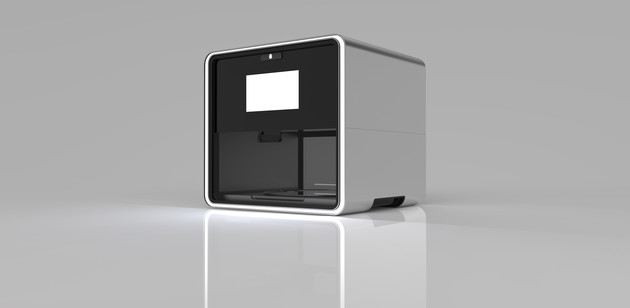3D-printed food a reality, but winemakers need not worry
Winemakers have no need to worry - yet - about consumers replicating their wines through 3D printing.
Winemakers have no need to worry - yet - about consumers replicating their wines through 3D printing.
 The sleek Foodini 3D printerSource: Natural MachinesWhile not yet capable of printing wine or other liquids, such technology is advancing fast.
The sleek Foodini 3D printerSource: Natural MachinesWhile not yet capable of printing wine or other liquids, such technology is advancing fast.
The hi-tech 3D printers are being used to print solid foods, but for now, liquids are not on the agenda.
Lynette Kucsma, co-founder and chief marketing officer of Natural Machines, which makes 3D printer Foodini, told Harpers.co.uk how well the appliance works for printing food such as mashed potatoes or ravioli.
But, she said: "I don't believe wine would work, unless it's thickened somehow, otherwise it would just drip out of the machine. The texture of the food put into the capsules has to be of a certain consistency. Take a tomato sauce as an example. It can't be too watery; otherwise it will drip or free-flow out of the capsule. It can't be overly chunky; otherwise it will clog up the nozzle and won't print. But perhaps a thicker wine-reduction sauce could work."
In addition, the machine does not replicate flavours, but prints out using the ingredients you have put in. That means there is currently no way to recreate the specifics that give a wine flavour, such as its particular blend and ageing programme.
 Professional chefs could use the Foodini to enhance presentationSource: Natural MachinesThis ultra fancy display is fish and chips - users can download pictures, or choose their own images and use Foodini software to create templates which allow them to print items like this.
Professional chefs could use the Foodini to enhance presentationSource: Natural MachinesThis ultra fancy display is fish and chips - users can download pictures, or choose their own images and use Foodini software to create templates which allow them to print items like this.
Some 3D food printers work using pre-mixed powders, but Kucsma's version uses fresh ingredients. She says it could be used in a professional kitchen, as a tool that allows chefs to do intricate things they couldn't do before, or with catering companies to print business logos on to food when working with firms launching new products, for example.
It also has a role to play in regular kitchens, Kucsma said. "We've become too reliant on prepackaged food with high salt and oil content. The idea behind Foodini is to get people back into the kitchen, making things by hand. But we are a time pressured society and this will help expedite the process."
The machine, which is sleek and looks like a high-end appliance, is currently in the prototype stage, but an early access manufacturing run will be complete by the end of the year, with mainstream production by the middle of next year. The unit will be priced at around £800, similar to a high-end coffee machine or food processor. Kucsma said the price will come down, as happened with flatscreen TVs.





